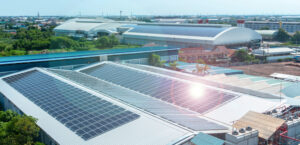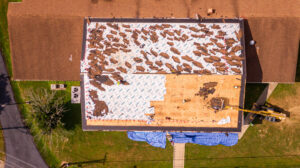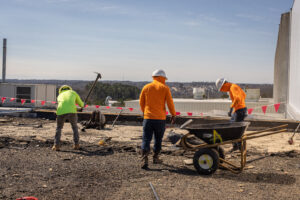It’s no secret that a well-maintained roof is essential to the overall well-being of your commercial building. A leaky or damaged commercial roof can lead to all sorts of problems, from water damage to mold growth. If you’re dealing with an old commercial roof, it’s essential to take steps to restore it as soon as possible.
This article will discuss the steps you need to take to restore an old commercial roof. We’ll start by discussing the condition of your roof and assessing the damage. Then we’ll show you how to clean and repair any damaged areas. Finally, we’ll give you some tips for maintaining your newly restored roof.
Inspect the Roof for Damage
The first step is to inspect the roof for damage. Start by looking for any obvious signs of damage, such as leaks, cracks, or missing roofing material. If you see any of these problems, note them so you can address them in the following steps. Next, take a look at the vents, chimneys, and other openings in the roof. Make sure that these are all properly sealed and free of any damage.
Discuss the Options with Experienced Commercial Roofers
Before you begin the restoration process, discussing your options with your roofers is essential. They will be able to help you decide what is best for your project and how much it will cost. They can also provide information about warranties on materials and labor. Commercial roofers also inspect the roof much more thoroughly than the average person, and they may be able to find damage that you overlooked.
To begin with, however, discuss the issues you’ve noted down with your contractor or company representative:
- Discuss the pros and cons of each option.
- Confirm that the contractor or company will warranty their work.
- Discuss the time required for completion of each option
- Get an estimate of the cost of each option.
Choose the Materials That Match The Original Roofing
When it comes to choosing the materials that will be used on your new commercial roof, you’ll have to make sure they match the original. This means matching the weight of the material and color. If you mix up too many different types of materials and apply them in an incorrect order, then your new roof might not look as good as you had hoped for.
Cleaning the Roof and Pre-Treating Mold and Mildew
Once you’ve decided on a plan of action, the next step is to clean the roof. Roofing Contractors use special cleaners and pressure washers to clean roofs. These cleaners are designed to remove all the dirt, grime, and moss without damaging the roofing materials.
Stubborn mold and mildew can be pre-treated with a solution of disinfectant. This will kill the mold and mildew and prepare the surface for the restoration process.
Repairing Damaged Areas
Once the roof is set, the next thing to do is to repair any damaged areas. This might involve patching up holes, filling in cracks, or replacing missing roofing material. Again, it’s important to match the materials that you use to the original roofing. This will ensure that your new roof looks as seamless as possible.
Applying the Protective Coating
After the roof is repaired, the next step is to apply a protective coating. This coating will help to prolong the life of your new roof and protect it from the elements.
There are many different types of coatings that can be used on commercial roofs. The type of coating you choose will depend on the material of your roof and the climate in your area. For more info, you can read this guide on the best roof coatings.
Inspect The Work To Make Necessary Adjustments
Once the protective coating has been applied, your roof will be ready for its final inspection. Make sure to check for any leaks, cracks, or damage before you sign off on the project.
Maintaining Your New Roof
After your commercial roof has been restored, it’s important to maintain it properly. This means regularly cleaning it and inspecting it for any damage. You should also have it professionally inspected at least once a year.
Opt-in For a Commercial Maintenance Plan
Preventive maintenance is essential for the longevity of your commercial roof. A commercial maintenance plan can be very helpful in keeping your roof in good condition and catching any problems early on.
This type of plan typically includes:
- Scheduled Regular Inspections
- A plan for emergency repairs
- A discount on future repairs
- Priority scheduling for service
If you’re looking for a reputable commercial roofing contractor to take the hassle out of maintaining your commercial roof, Check our Eskola Shield Maintenance Plan. Our maintenance plan is designed to keep your roof in peak condition and help you avoid costly repairs down the road.
Conclusion
Restoring an old commercial roof can be a daunting task. But with the help of a professional roofing contractor, it can be done relatively easily and can prolong the life of your roof and save you money in the long run.
FAQs
Roof restoration is a process that involves cleaning the roof, repairing any damage, and then applying a protective coating. Roof replacement is a more comprehensive process that involves removing the old roof and installing a new one.
There are many benefits to roof restoration, including prolonging the life of your roof, protecting it from the elements, and saving money on future repairs.
It’s a good idea to have your roof professionally inspected at least once a year. This will help identify potential problems so they can be fixed before they become major issues.






